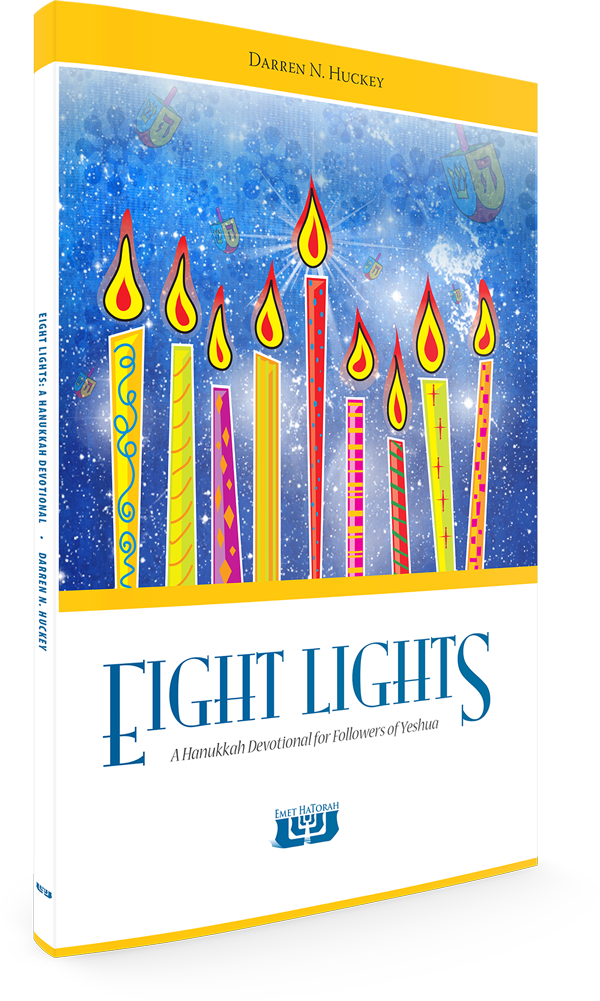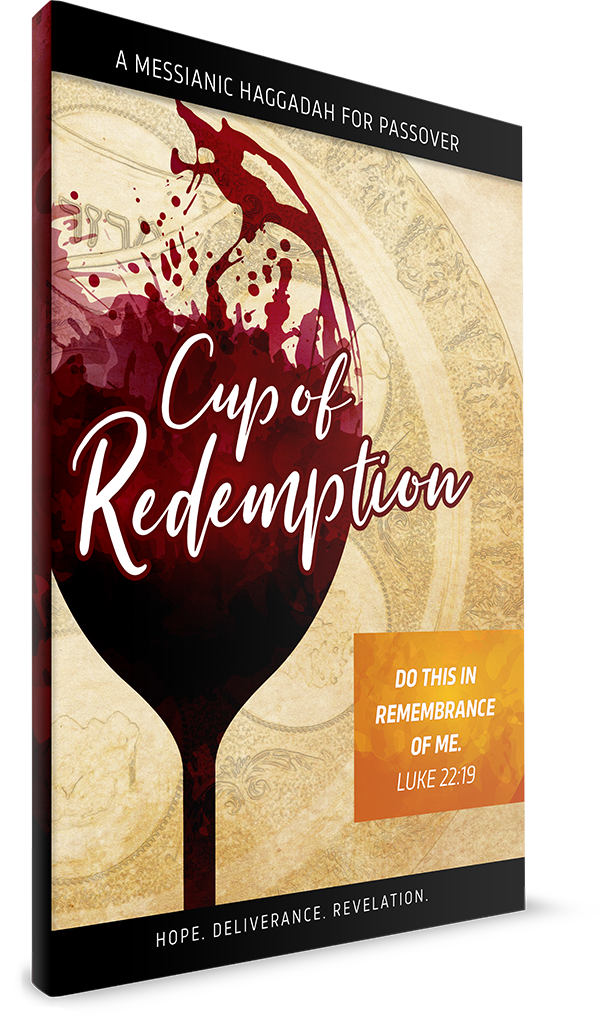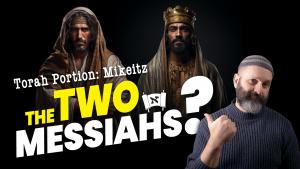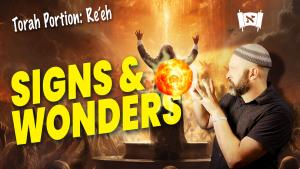The Vatican's New Groove
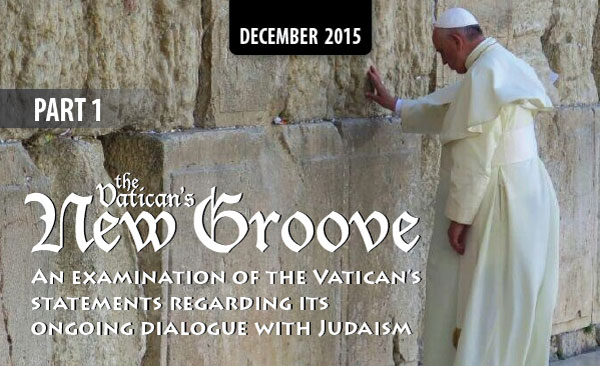
On December 10, 2015, the Vatican issued a paper highlighting and clarifying their ongoing dialogue with Judaism. Many may have heard about this through Facebook or church organizations who immediately began criticizing the paper’s pivotal statement, which seems to be theologically opposed to the message of the gospel. Many people have assumed that the paper simply means “Jewish people don’t need Jesus.” But what exactly does it mean and how did the Catholic Church arrive at this conclusion? What I would like to do is divide the discussion into three parts: First, I would like to give a little background as to what lead to this development. Second, I would like to accurately communicate the statements made by the Catholic Church. Third, I would like to explain the significance of these statements, particularly in light of how biblical covenants work, as well as help to clear up any misunderstandings of these statements. Please keep in mind that while I am not in agreement with Roman Catholic theology or practice, it will become obvious that this paper is a watershed in Jewish-Christian relations and understandings. I can only see this aiding the Messianic-Jewish movement. I can also see this statement as marking the advent of a new era in the progression of the Kingdom of Messiah on the earth.
Nostra Aetate
To begin, let me give a little background to introduce this material. The latest paper issued by the Vatican did not develop in a vacuum. This paper was built around interfaith discussions over the last fifty years between the Church of Rome and Judaism. It stands on the shoulders of a formal statement released by Pope Paul VI, and the Second Vatican Council on October 28, 1965. It was formally titled the Nostra Aetate (Latin: “In our Time”). In this statement, the Catholic Church made a firm commitment to develop Catholic-Jewish dialogue in order to aid in mutual understanding of each religion, with the intentions of building mutual respect for one another. In a sense, it was a by-product of the Shoah (the Holocaust) by which the Roman Church began to take steps to avoid the repetition of such an event in the future. (Remember the inquisitions? The office of the Inquisition did not officially cease until 1967, just two years after the release of this statement.) However, the scope of the statement was extended to include their interaction with all “Non-Christian Religions.” It is subtitled “The Declaration on the Relation of the Church with Non-Christian Religions.”
The Nostra Aetate was a brief paper (roughly 1,600 words in length) that contained only five points of discussion centered around Catholicism’s relationship with non- Christian religions. The fourth point is specifically directed towards Jews and Judaism, which is succinctly summed up by the following statement:
Since the spiritual patrimony common to Christians and Jews is thus so great, this sacred synod wants to foster and recommend that mutual understanding and respect which is the fruit, above all, of biblical and theological studies as well as of fraternal dialogues.
Although the paper was a starting point for interfaith dialogue, it was not immediately a match made in heaven. Within the paper itself, Christians were referred to as “the new people of God,” whereas the Jewishness of Yeshua and the Apostles was seen as a fact that did not carry over into their encounter with Christ:
[The Church] also recalls that the Apostles, the Church’s main-stay and pillars, as well as most of the early disciples who proclaimed Christ’s Gospel to the world, sprang from the Jewish people.
It did, however, have a very direct repudiation of anti-Judaic and anti-Semitic actions connected with the Church, saying that it “decries hatred, persecutions, displays of anti-Semitism, directed against Jews at any time and by anyone.” It boldly declared that although the Church does not in any way understand this certain fact, the covenant made with the Jewish nation at Sinai still stands, and Catholics should bear this in mind while working towards a day in which both Jew and Christian will serve their heavenly Father “shoulder to shoulder”:
Nevertheless, God holds the Jews most dear for the sake of their Fathers; He does not repent of the gifts He makes or of the calls He issues-such is the witness of the Apostle.(11) In company with the Prophets and the same Apostle, the Church awaits that day, known to God alone, on which all peoples will address the Lord in a single voice and “serve him shoulder to shoulder” (Soph. 3:9).(12)
While the Nostra Aetate was a starting point for some long overdue interfaith dialogue between Rome and Jerusalem, it was not an end-all solution to the enormous weight that the Catholic Church has had hovering over it from centuries of persecution against the Jewish people. It would take another fifty years for this seed of hope to blossom into the fruit of understanding and genuinely mutual respect.
The Will of Heaven
On December 3, 2015, the fiftieth anniversary of the Nostra Aetate, the Center for Jewish- Christian Understanding and Cooperation (CJCUC), released a statement entitled, “To Do the Will of Our Father in Heaven: Toward a Partnership between Jews and Christians.”1 It takes its name from one of the opening lines, which states:
We seek to do the will of our Father in Heaven by accepting the hand offered to us by our Christian brothers and sisters. Jews and Christians must work together as partners to address the moral challenges of our era.
The statement (just over a thousand words in length) makes note of the ongoing progress of relationships between Catholics and Jews since the conclusion of the Shoah. It summarizes the ground that has been gained over the last seventy years, particularly in light of the Vatican’s recognition of the eternal covenant God made with the Jewish people as stated in the Nostra Aetate. It also included an impressive quotation from Rabbi Jacob Emden on the contributions of Yeshua and the ongoing work of Christianity in the world. This quote represents the hope that lies ahead in Jewish-Christian dialogue. It stated:
Jesus brought a double goodness to the world. On the one hand he strengthened the Torah of Moses majestically … and not one of our Sages spoke out more emphatically concerning the immutability of the Torah. On the other hand he removed idols from the nations and obligated them in the seven commandments of Noah so that they would not behave like animals of the field, and instilled them firmly with moral traits … Christians are congregations that work for the sake of heaven who are destined to endure, whose intent is for the sake of heaven and whose reward will not [be] denied.
It affirmed the progress made in Jewish-Christian relations made over the last fifty years that would not have been possible prior to the release of the Nostra Aetate:
The promulgation of Nostra Aetate fifty years ago started the process of reconciliation between our two communities. Nostra Aetate and the later official Church documents it inspired unequivocally reject any form of anti-Semitism, affirm the eternal Covenant between G-d and the Jewish people, reject deicide and stress the unique relationship between Christians and Jews, who were called “our elder brothers” by Pope John Paul II and “our fathers in faith” by Pope Benedict XVI.
It continued further by stating that reciprocation is due for the recognition given to Judaism by the Roman Church:
Now that the Catholic Church has acknowledged the eternal Covenant between G-d and Israel, we Jews can acknowledge the ongoing constructive validity of Christianity as our partner in world redemption, without any fear that this will be exploited for missionary purposes.
It continued by stating that both Judaism and Christianity are together obligated to fight the battle against immorality and “the survival and welfare of humanity.” It made the bold statement that “Neither of us [Judaism nor Christianity] can achieve G-d’s mission in this world alone.” It continued by saying, ”Both Jews and Christians have a common covenantal mission to perfect the world under the sovereignty of the Almighty, so that all humanity will call on His name and abominations will be removed from the earth.” This statement succinctly reflects the sentiments found in a section of the Aleinu, a pivotal prayer found within the siddur which is prayed daily:
Therefore, we put our hope in You, Hashem our God, that we may quickly see the splendor of Your power, to remove abominations from the earth and false gods will be utterly cut off. In order to perfect the world through the kingship of the Almighty. And all flesh will call upon Your name, to turn all the earth’s wicked toward You. All the world’s inhabitants will recognize and know that to You every knee should bend, every tongue should swear. Before You, Hashem, our God, they will bend their knee and cast themselves down and give honor to the glory of Your name. They will all accept the yoke of Your kingship and You will reign over them quickly and eternally.2
One remarkable statement compares the relationship of Jews and Christians to the relationship between Jacob and Esau. In the Jewish mind, Jacob and Esau are perpetual enemies, where Jacob is constantly “on the run” in order to escape his brother’s domination. In Jewish literature, Esau (spoken of as Edom) is epitomized by Rome. Since the time of the Roman occupation of the Holy Land, the Jewish mind has made a connection between Rome and Edom. When Christianity later found its home in Rome, this symbolism was transferred to the Church. For at least 1,500 years, Judaism has viewed the Roman Church as Jacob’s wicked brother, Esau. With this in mind, the following statement made by this paper is highly significant:
In the past relations between Christians and Jews were often seen through the adversarial relationship of Esau and Jacob, yet Rabbi Naftali Zvi Berliner (Netziv) already understood at the end of the 19th century that Jews and Christians are destined by G-d to be loving partners: “In the future when the children of Esau are moved by pure spirit to recognize the people of Israel and their virtues, then we will also be moved to recognize that Esau is our brother.”
The statement concluded with the declaration that Jews and Christians must continue to join together in the work of global redemption:
In imitating G-d, Jews and Christians must offer models of service, unconditional love and holiness. We are all created in G-d’s Holy Image, and Jews and Christians will remain dedicated to the Covenant by playing an active role together in redeeming the world.
The Vatican’s New Groove
In response to this statement by the CJCUC, the Pontifical Commission for Religious Relations with the Jews released a paper on December 10, 2015—exactly one week after the rabbinical statement was released—entitled, “The gifts and the calling of God are irrevocable.” The title, of course, is based on Paul’s statement in Romans 11:29. It was subtitled, “A reflection on theological questions pertaining to Catholic-Jewish relations.”3 More than 10,000 words in length, this statement far surpasses both the Nostra Aetate and the statement released by the CJCUC in both length and detail on how the Catholic Church understands the relationship of the Jewish people in regard to both herself and the Creator.
The preface to this paper makes it clear that this statement is not an official statement put forth by the Vatican, but it is “a reflection prepared by the Commission for Religious Relations with the Jews on current theological questions that have developed since the Second Vatican Council,” saying that its intention is to be “a starting point for further theological thought with a view to enriching and intensifying the theological dimension of Jewish-Catholic dialogue.” The point is made clear that, whereas the Nostra Aetate was a statement directed at all non-Christian religions, the current paper is specifically directed towards Jewish-Catholic relations saying, “the dialogue within Judaism has a completely different character and is on a different level in comparison with the other world religions.” Unlike many Protestant sects, the Roman Church recognizes that Jews have a unique and covenantal relationship with the God of Abraham, Isaac, and Jacob. Whereas most of Christianity ignores the Jews’ covenantal status with the God of the Bible and lumps the Jews together with other non-biblical religious groups such as Muslims, Buddhists, or Hindus, the Catholic Church admits that the Jewish people still have an ongoing relationship with the God of Abraham, Isaac and Jacob. The core of this paper revolves around the Catholic Church’s acknowledgment of this fact and how it is responding to this awareness.
It begins with a historic reflection of the release of Nostra Aetate and the progress in Jewish-Christian dialogue that has taken place during the fifty years following its release. After summarizing the release of Nostra Aetate as well as multiple subsequent papers and studies released by the Roman Church, it begins a lengthy summary detailing many progresses and landmarks in Jewish-Christian understanding and relations along the journey.
One of the first acknowledgments keenly observes that, “Without her Jewish roots the Church would be in danger of losing its soteriological anchoring in salvation history and would slide into an ultimately unhistorical Gnosis.” Here it acknowledges the fact that Christianity must understand its origins in Judaism in order to have any true self-understanding. It alludes back to a time in Christian history when the early heresy of Gnosticism—a heresy that jettisoned the Hebrew Scriptures along with any semblance of Judaism—threatened the very existence of Christianity itself. Although it was deemed a heresy by the early Church, its theology has been almost inseparable from Christian orthodoxy since it was introduced systematically by Marcion in the second century. The Church’s recognition of this potential unraveling of its own existence is an important breakthrough in and of itself.
From this point on the paper begins making several statements that are nothing short of remarkable, displaying a fundamental shift in its understanding of not only Judaism and Christianity, but of Yeshua as well:
Jesus was a Jew, was at home in the Jewish tradition of his time, and was decisively shaped by this religious milieu (cf. “Ecclesia in Medio Oriente”, 20). His first disciples gathered around him had the same heritage and were defined by the same Jewish tradition in their everyday life. In his unique relationship with his heavenly Father, Jesus was intent above all on proclaiming the coming of the Kingdom of God. “The time is fulfilled and the kingdom of God is at hand, repent and believe in the gospel” (Mk 1:15). Within Judaism there were many very different kinds of ideas regarding how the kingdom of God would be realised, and yet Jesus’ central message on the Kingdom of God is in accordance with some Jewish thinking of his day. One cannot understand Jesus’ teaching or that of his disciples without situating it within the Jewish horizon in the context of the living tradition of Israel; one would understand his teachings even less so if they were seen in opposition to this tradition. In Jesus not a few Jews of his time saw the coming of a ‘new Moses’, the promised Christ (Messiah). But his coming nevertheless provoked a drama with consequences still felt today. Fully and completely human, a Jew of his time, descendant of Abraham, son of David, shaped by the whole tradition of Israel, heir of the prophets, Jesus stands in continuity with his people and its history. On the other hand he is, in the light of the Christian faith, himself God – the Son – and he transcends time, history, and every earthly reality.
The Catholic Church stands in recognition that Yeshua’s Jewishness (as well as that of his disciples) was more than incidental, and that his Judaism was more than marginal. In this statement the Catholic Church presents the pragmatism of this fact by saying, “One cannot understand Jesus’ teaching or that of his disciples without situating it within the Jewish horizon in the context of the living tradition of Israel; one would understand his teachings even less so if they were seen in opposition to this tradition.” This one statement potentially unravels centuries of anti-Judaic theology in which Jesus is viewed from a lens that sees him as the antithesis to Judaism, whose rebukes against the religious leaders of his day condemned this Jewish religion of works and replaced it with Christianity.
This theological axiom—that Jesus and/or his disciples founded a religion in counter-distinction from Judaism that was one day called Christianity—has been at the core of Christian belief for so long that it is nearly impossible to imagine that Christianity, as we know it today, was not a separate religion until centuries after the time of Yeshua. In the days of the Apostles, the religion practiced by all followers of Yeshua was Judaism. It was a distinct sect within Judaism, similar to Pharisaism, but it was by no means a separate religion; it was Judaism through and through. It was known by various names: The Way, the Sect of the Nazarenes, (which modern Hebrew terms Notzrim today) and others. The followers of Yeshua were eventually called “Christians” (i.e. Messianics) at Antioch by those outside of the faith. But this was a designation merely to distinguish them from the other sects within Judaism during this time. We know of the Pharisees, the Sadducees, the Zealots, the Essenes, the Boethusians and a host of other minor sects that fell by the wayside after the destruction of the Temple in 70 C.E. We don’t, however, refer to them as a separate religion as we do Christianity. This is because Christianity took a turn away from Judaism—based on its misunderstanding of Paul’s letters combined with a healthy dose of anti-Semitism—and cut herself off from the mother who bore her.
For nearly two thousand years, Christianity has all but forgotten its origins and severed itself from its Jewish roots. It has had almost two millennia to redefine itself against Judaism and boast of its spiritual superiority. It has forgotten Paul’s rebuke when he addressed the believers in Rome:
But if some of the branches were broken off, and you, although a wild olive shoot, were grafted in among the others and now share in the nourishing root of the olive tree, do not be arrogant toward the branches. If you are, remember it is not you who support the root, but the root that supports you. (Romans 11:17–18)
Although today’s Christianity does not reflect Judaism in any real noticeable manner, it once was indistinguishable from it.4 This paper calls us back to a time before the Church of Rome, to a time where believers in Yeshua were merely Jews practicing Judaism with the fulfillment of the Messianic hope in their midst. It is this understanding that the Church of Rome calls us to, saying, “Given Jesus’ Jewish origins, coming to terms with Judaism in one way or another is indispensable for Christians.”
To be continued …
- 1. It can be found at http://cjcuc.com/site/2015/12/03/orthodox-rabbinic-statement-on-christia....
- 2. Translation my own, taken from Tefillot Tamid: Eternal Prayers from Jewish Tradition (Emet HaTorah, 2015).
- 3. A formatted copy of this paper can be found at http://www.emethatorah.com/gifts-and-calling-god-are-irrevocable.
- 4. Abraham E. Millgram, Jewish Worship (Jewish Publications Society, 1975-12-10), 440.

